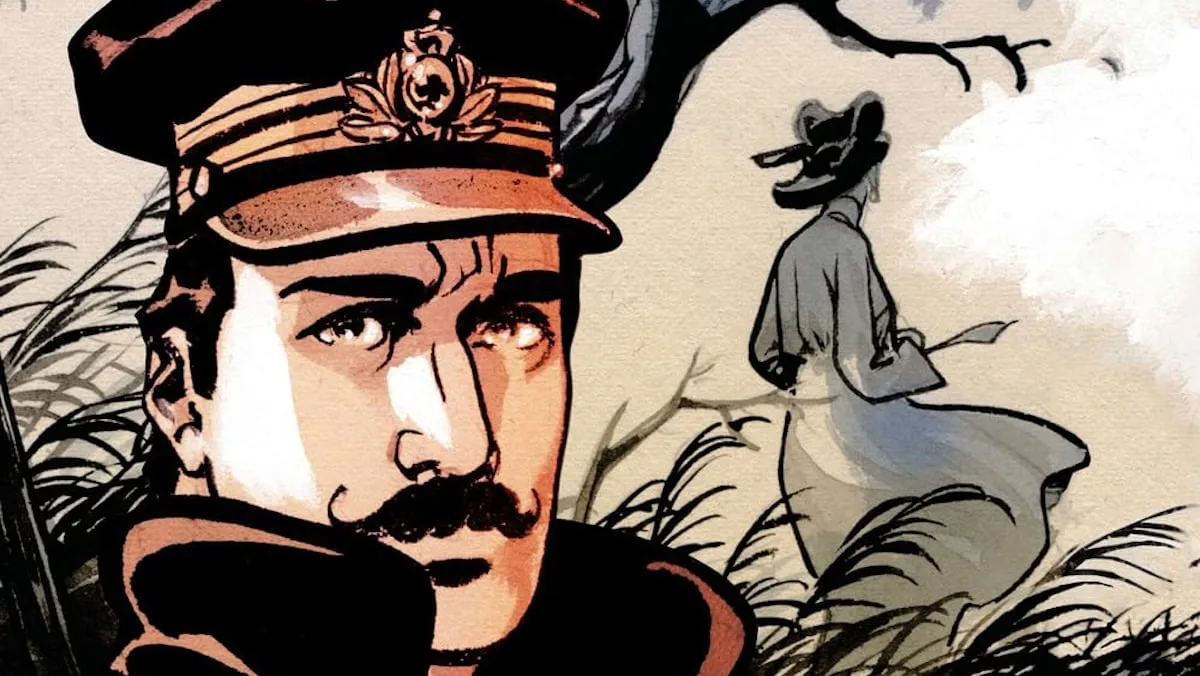La fine violenta di un impero millenario, un amore impossibile tra un nobile lucano e una donna cinese, ma una sola cura a questi mali: la volontà di aprirsi all’Altro.
La sola cura è il titolo della graphic novel pubblicata nel 2024 da Edizioni Oblomov, in cui Giuseppe Palumbo ci conduce in un viaggio affascinante tra la Basilicata di inizio Novecento e la Cina imperiale al tramonto, rievocando la storia sorprendente e poco nota di Ludovico Nicola di Giura, raccontataci dalla prospettiva della sua amante Fior d’Amore. Anche dal punto di vista grafico, l’opera ha infatti tutto l’aspetto di un grande ricordo. Sfogliando le pagine, l’occhio è avvolto da una tavolozza di colori caldi, frutto di una tecnica che combina la china a mezzatinta su carta di puro cotone color beige, arricchita successivamente da tocchi di colore aggiunti in post-produzione. “Il mio obiettivo non è colorare oggetti, ma creare vere e proprie scenografie cromatiche” racconta l’autore.
Lucano come l’autore, Di Giura parte all’alba del secolo breve a bordo della Regia Nave Cristoforo Colombo come medico militare in un contingente italiano diretto in Estremo Oriente. La destinazione è la Cina, in preda alla devastante rivolta dei Boxer, una guerra civile feroce che scuote le fondamenta dell’Impero Qing e anticipa la fine di un’epoca. È in questo contesto turbolento, nel cuore del caos, che Di Giura si distingue non solo come curatore di corpi – curando persino l’ultimo imperatore Pu Yi– ma anche come guaritore di anime, ponte tra due civiltà apparentemente inconciliabili. Nella Cina imperiale, Di Giura non si limita infatti a esercitare la medicina: si immerge nella lingua, nella filosofia, nella letteratura del luogo. Traduce Confucio e molti poeti antichi cinesi, diventando così un importante mediatore culturale tra Oriente e Occidente.
Il suo lavoro di sinologo assume oggi una forza simbolica rara: attraverso lo studio profondo dell’Altro, egli trova la via per superare i muri della diffidenza e della distanza. E proprio in questo messaggio risiede l’attualità bruciante dell’opera. In un mondo come il nostro, iperconnesso ma sempre più fragile, in cui l’Altro sembra essere sempre a portata di smartphone, La sola cura ci ricorda che l’incontro vero può avvenire esclusivamente con lo studio, il corpo e il cuore. Ed è questa, ancora oggi, l’unica cura che ci rimane.
The violent end of a thousand-year-old empire, an impossible love between a Lucanian nobleman and a Chinese woman, but a single cure for these evils: the willingness to open up to the Other.
La sola cura (The Only Cure) is the title of the graphic novel published in 2024 by Edizioni Oblomov, in which Giuseppe Palumbo takes us on a fascinating journey between early 20th-century Basilicata and imperial China, recounting the surprising and little-known story of Ludovico Nicola di Giura, told from the perspective of his lover Fior d’Amore. Even from a graphic point of view, the work has all the appearance of a great memory. Leafing through the pages, the eye is enveloped by a palette of warm colours, the result of a technique that combines India ink with halftone on pure beige cotton paper, subsequently enriched by touches of colour added in post-production. ‘My aim is not to colour objects, but to create real chromatic scenes,’ says the author.
Like the author, Di Giura hails from Basilicata and sets off at the dawn of the short century aboard the Regia Nave Cristoforo Colombo as a military doctor in an Italian contingent bound for the Far East. The destination is China, in the throes of the devastating Boxer Rebellion, a fierce civil war that shakes the foundations of the Qing Empire and heralds the end of an era. It is in this turbulent context, in the heart of the chaos, that Di Giura distinguishes himself not only as a healer of bodies – even treating the last emperor Pu Yi – but also as a healer of souls, a bridge between two seemingly irreconcilable cultures. In imperial China, Di Giura does not limit himself to practising medicine: he immerses himself in the language, philosophy and literature of the place. He translated Confucius and many ancient Chinese poets, thus becoming an important cultural mediator between East and West.
His work as a sinologist now takes on a rare symbolic power: through his profound study of the Other, he found a way to overcome the walls of mistrust and distance. It is precisely in this message that the burning relevance of the work lies. In a world like ours, hyperconnected but increasingly fragile, where the Other seems to be always within reach of a smartphone, La sola cura reminds us that true encounter can only come about through study, the body and the heart. And this, even today, is the only cure we have left.

